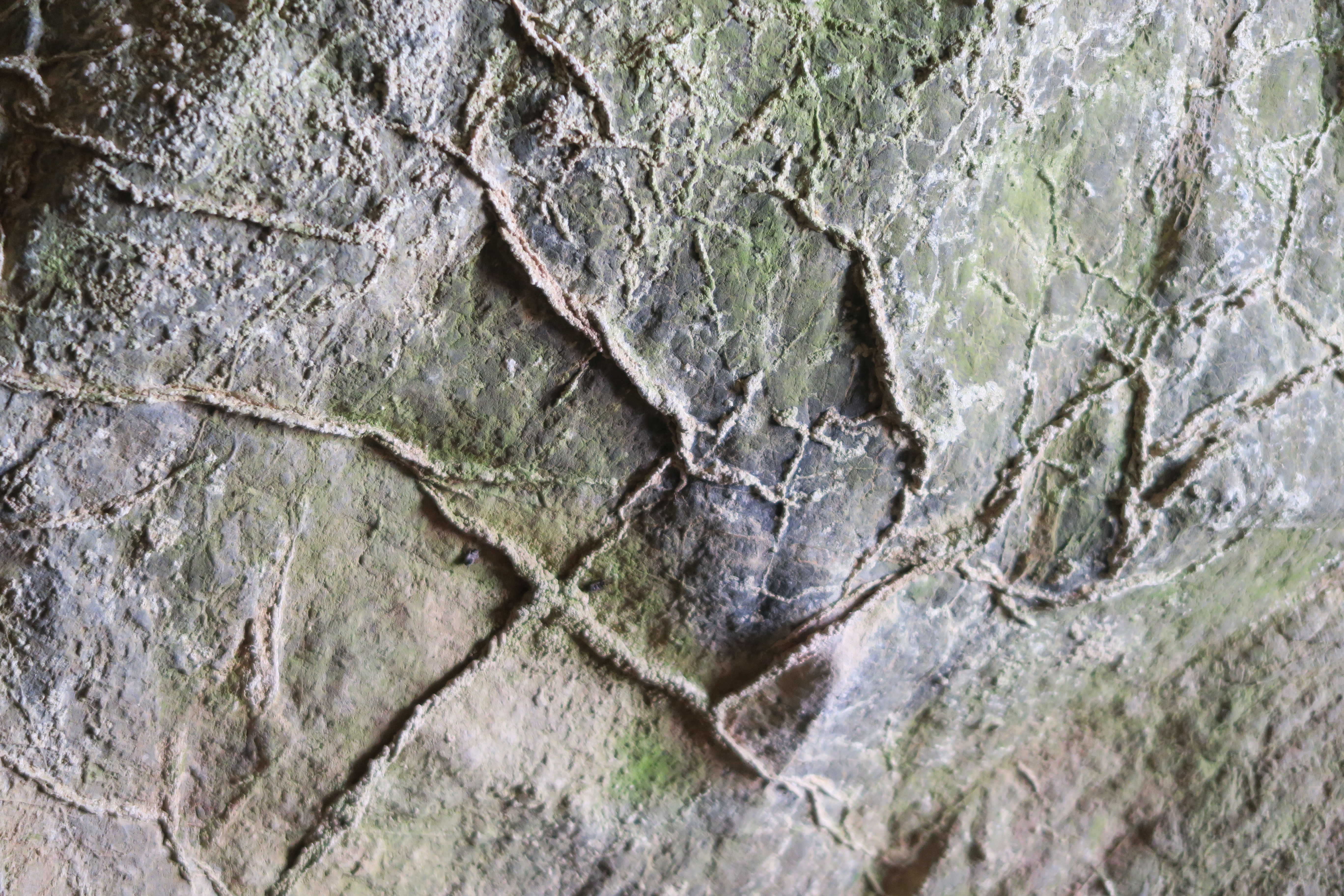
Vein structure from evaporation in the initial tunnel
On first sight they look like boxworks but they are not.
While boxworks are very thin layers of calcite sticking out that have resisted to the corrosion of the dolomitic limestone which surrounded it, these protruding veins, clearly visible in the part of the tunnel which separates the natural entrance of the cave from the Hall of the Bear, have a very different origin.
They are not the result of corrosion but, on the contrary, are limestone deposits, formations that, unlike those which make up the main attraction of the first itinerary, are not caused by a slow release of carbon dioxide from the water or, at least only from that. In the initial tunnel the rock is crossed by very thin cracks or porous planes, inside which the water, saturated with dissolved calcium bicarbonate, can only circulate under conditions of capillarity.
During Summer, when the walls are almost always covered by a veil of condensation water, that contained in the capillaries is practically motionless. The opposite happens instead when the cold wind blowing in loses the relative humidity when warming up, the surface of the walls becomes dry and the water which impregnates the rock is sucked up for capillarity towards the emptiness of the tunnel.
Where the little channels develop into the underground cavity, the rapid evaporation transforms the calcium bicarbonate dissolved in the water into calcium carbonate, which deposits forming little protruding threads with an opaque and vaguely spongy appearance, very different from the crystalline one of the stalactites and stalagmites and flowstones which can be admired further on. The limescale deposited due to the evaporation of water is amorphous or cryptocrystalline (*) like that which often encrusts pots and pans.
The gritty veils of calcite which cover the left wall of the tunnel before the steel door are probably of the same origin. In that case the movement for capillarity would not be concentrated along preferential lines but would be caused by a widespread porosity. This however is an assumption without reliable scientific confirmation, more so since the rock in question, made smooth by the vortexes of an ancient underground river, appears to be exceptionally compact in that point.
(*) Made up of microscopic crystals invisible to the naked eye.

Gritty veils of calcite; two veins can be seen on the right

Vein structure from evaporation on old dead formations a few metres past the steel door






